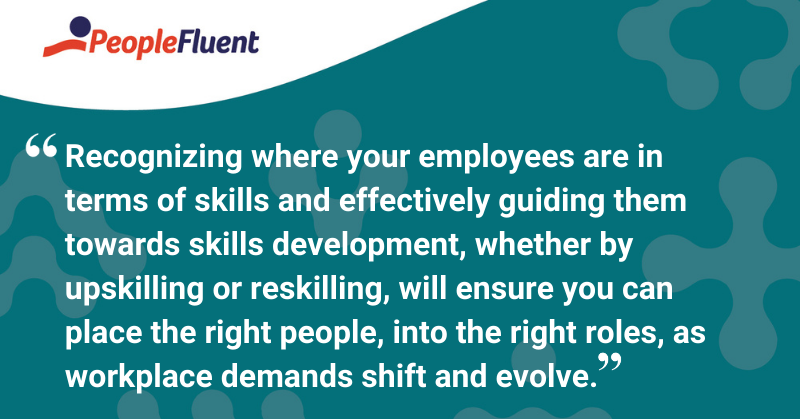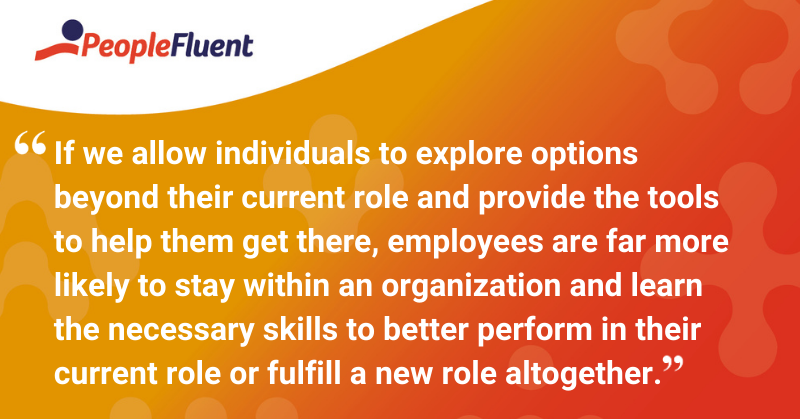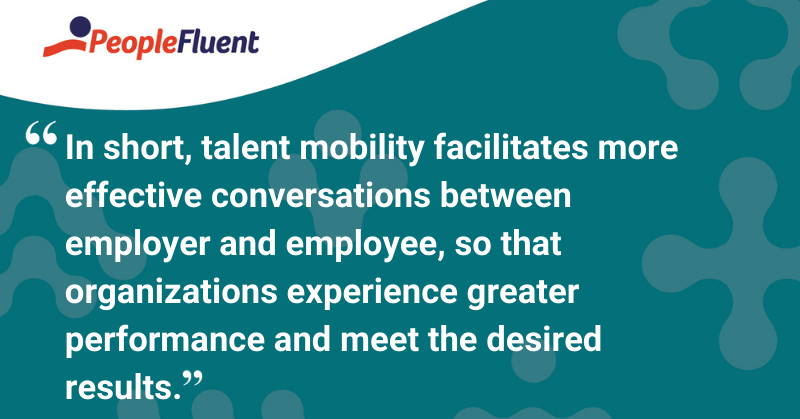Published: Feb 22, 2021Time to read: 8mins Category: Insights
Upskilling vs. Reskilling: Understanding the Differences and Their Role in Talent Mobility
Table of Contents
As the world of work changes and learning and development becomes more nuanced and sophisticated, understanding the main differences between upskilling and reskilling can provide a clear window into how to manage your organization’s most valuable asset: your workforce. A talent mobility platform and strategy can help you identify where your employees are and where they need to be skills-wise, so you can nurture, grow and develop existing talent.
In the current workplace scenario, roles are changing and some have transformed completely. According to a World Economic Forum study, it’s estimated that by 2025, 85 million jobs may be displaced by a shift in the division of labor between humans and machines. Additionally, 97 million new roles may emerge that are more adapted to the new division of labor between humans, machines, and algorithms, across 15 industries and 26 economies covered by the report.
As a result, organizations today have to move employees around according to evolving roles and business needs. With these changes, there will be inevitable skill gaps among employees.
In fact, a McKinsey study revealed that 44% of respondents said their organizations will face skill gaps within the next five years, and another 43% report existing skill gaps. So, how can you optimize your workforce and bridge these gaps successfully? A talent mobility strategy that includes upskilling and reskilling could be the right solution.

RELATED READING | ‘What Is Talent Mobility? Plus, What It’s Not!’
What Is the Difference Between Reskilling and Upskilling?
What we’ve learned over the years is that engaging and retaining employees through career development opportunities is far more beneficial than hiring new talent.
In some cases, bringing new individuals on board is necessary. In many others, recognizing where your employees are in terms of skills and effectively guiding them towards skills development, whether by upskilling or reskilling, will ensure you can place the right people, into the right roles, as workplace demands shift and evolve.
What Is Upskilling?
Upskilling can be defined as the need to have an employee learn additional skills to be better equipped to do their job.
For example, you may have a seasoned marketer that needs to enhance their digital marketing skills to accommodate for changes in the industry and new performance metrics. In this case, the employee already has a strong knowledge baseline in their field and simply needs to add new skills to better perform at their job.
What Is Reskilling?
Reskilling can be defined as the need to teach an employee an entirely new skillset. While an organization may not need an employee’s specific skill set anymore, they are interested in utilizing some of the knowledge they have acquired over the years in terms of the company and its processes. In this case, an individual can be moved to another area altogether and will need to acquire a new skill set for their new role.
For example, an employee might no longer be needed in a physical distribution role, but their knowledge of the company makes them an excellent candidate to move them into eCommerce. A new skill set involving digitalization, among other technical skills, will be necessary for this scenario.

YOU MIGHT ALSO LIKE | ‘Rise of the Modern Talent Journey: Mapping the New Employee Experience’
Why Is Reskilling and Upskilling Your Workforce So Important?
The employer-employee relationship has changed greatly over recent years, with employees expecting more from their organizations than before. If employees don’t feel they’re getting development opportunities, they won’t hesitate to look outside for organizations that offer learning and development as part of a role. Additionally, in today’s ever-changing world, continuous learning needs to adopted as a lifelong process and pursuit and should be supported by organizations.
We also know that it costs more to recruit someone outside of a company than it does to develop and retain an individual that’s already a part of the organization. By upskilling or reskilling, companies are allocating their investment to the people that have prior knowledge of the company.
The advantage here is to find the potential of the individuals within your organization, understand the skills that they have, and measure them up against the roles that you need to fill and the objectives that need to be accomplished and match them.
This is where a talent mobility platform and strategy come in handy. If we allow individuals to explore options beyond their current role and provide the tools to help them get there, employees are far more likely to stay within an organization and learn the necessary skills to better perform in their current role or fulfill a new role altogether. Talent mobility facilitates these conversations.

MORE FROM THE BLOG | ‘Learning and Talent Mobility: A Winning Combination to Drive Employee Retention and Results’
How Can Organizations Address Skills Gaps With Employees?
In the past, performance reviews have worked well to highlight employee areas of work. What we’re seeing now is that this approach has usually been a one-sided conversation with the employer pointing out an employee’s deficiencies.
Using performance reviews as career touchpoints shouldn’t be so far apart, as these usually occur quarterly or annually. With talent mobility, employers are able to allow the employees to raise their hand to say what it is they want or believe they need to learn in order to be more successful at their job. Talent mobility facilitates both upskilling and reskilling, with an approach that is not unilateral.
The advantage here is that the employer receives a list of the skills an employee wants to develop, and together they can work out a plan to get the employee where they want to go.
In short, talent mobility facilitates more effective conversations between employer and employee, so that organizations experience greater performance and meet the desired results.

HANDPICKED FOR YOU | ‘5 Strategies to Improve Talent Mobility’
Supporting Employee Upskilling and Reskilling Through Learning Technologies
Learning technologies also play an important role in facilitating upskilling and reskilling endeavors through either a learning management system (LMS), a learning experience platform (LXP), or a combination of both.
Use an LMS for Reskilling
When it comes to reskilling, an LMS can be an effective learning platform to take the foundational skills of an employee and quickly move them from one skills path to another. As the system already contains employee profiles, the LMS is an efficient tool to understand where employees are and provide them with a clear path on where they need to go in terms of training.
In many cases, existing learning modules within the LMS can help speed up the learning process in a more controlled environment where learning is tied to a specific topic and has already been vetted, approved, and uploaded by the organization.
Use an LXP for Upskilling
Alternatively, an LXP can be the most effective learning technology for individuals that need to upskill. As a learning environment that provides flexibility in knowledge transfer, organizations can mobilize user-generated content, provide insights from resources others have uploaded, deliver access to topics and themes of interest pertaining to a role, and facilitate knowledge sharing with others in similar positions so individuals can enhance their skills for their current role and so forth.
Additionally, it allows employees to explore new skills outside of their current learning path, which can incite an appetite for lifelong learning and higher engagement levels when employees are allowed to explore other interests and passions outside of their day-to-day workflow.

FURTHER READING | What’s the Difference Between an LMS and an LXP? [Buyer’s Guide]
In Summary
What makes a good candidate for upskilling? An employee that requires developing a deeper level of knowledge or enhanced skills to be stronger in their current role. The key here is that it is relatively within the same discipline.
And what makes a good candidate for reskilling? An individual that is moving disciplines altogether. Organizations can take advantage of these individuals and the knowledge that they have acquired and reskill them to perform an entirely different role.
In both cases, organizations should seek a talent mobility platform and lean on learning technology to support career development. As education becomes more of a lifelong process and more of a necessity in today’s workplace dynamics, companies should embrace the concept by creating enablement around it. This way, they can ensure their employees grow and evolve alongside them.
RELATED EBOOK TO DOWNLOAD TODAY | ‘The Modern Talent Journey: Charting the New Ways of Work’